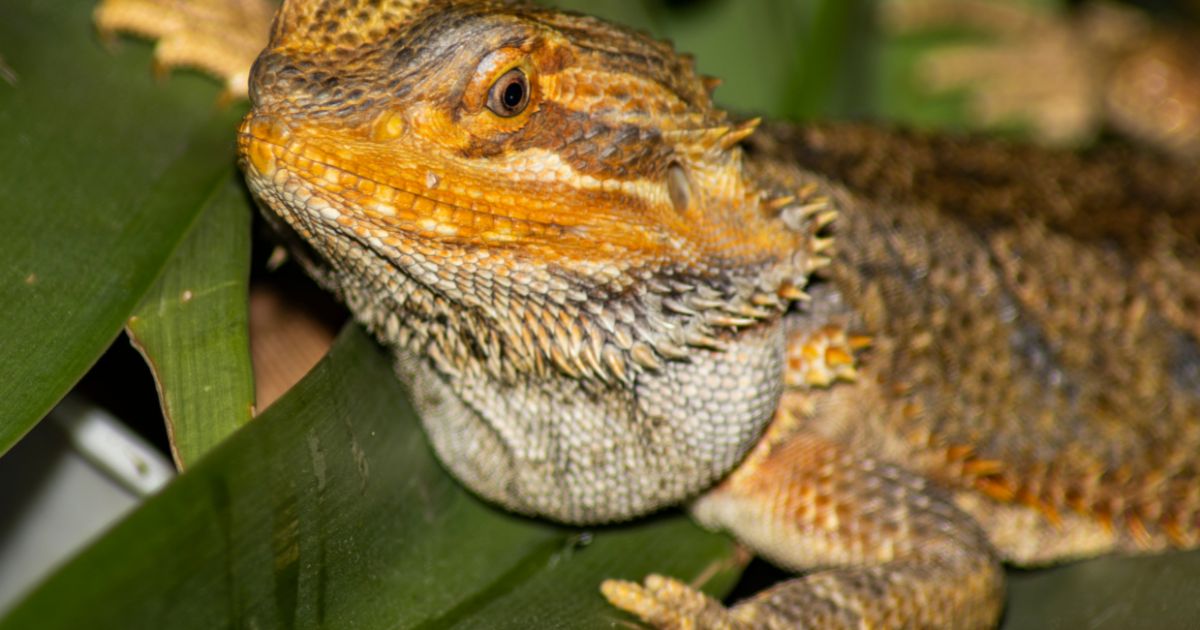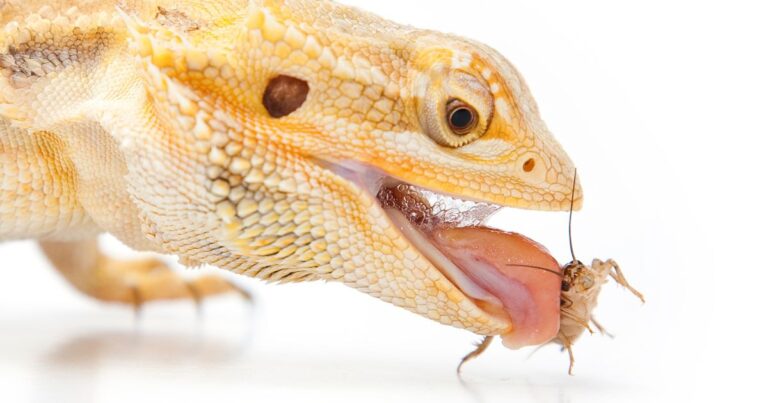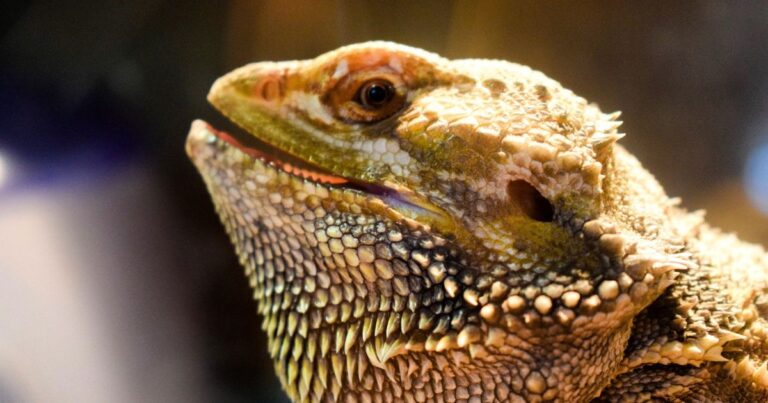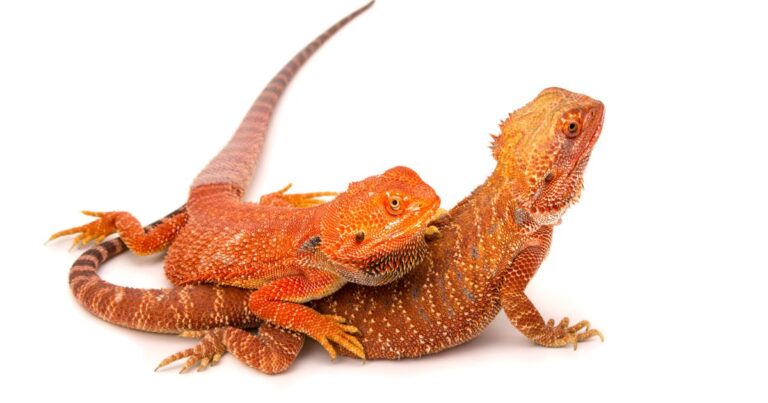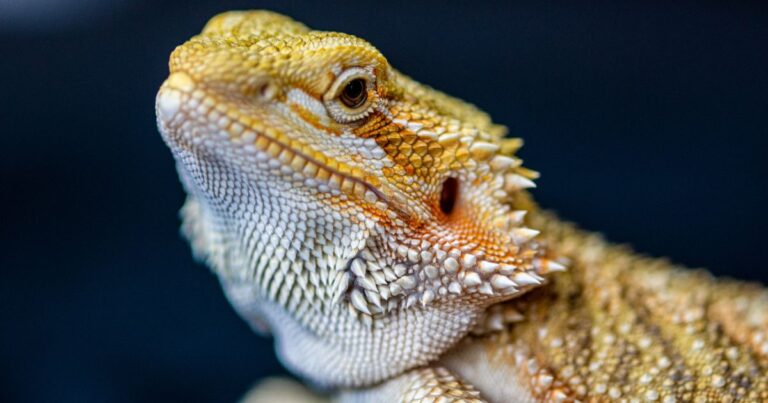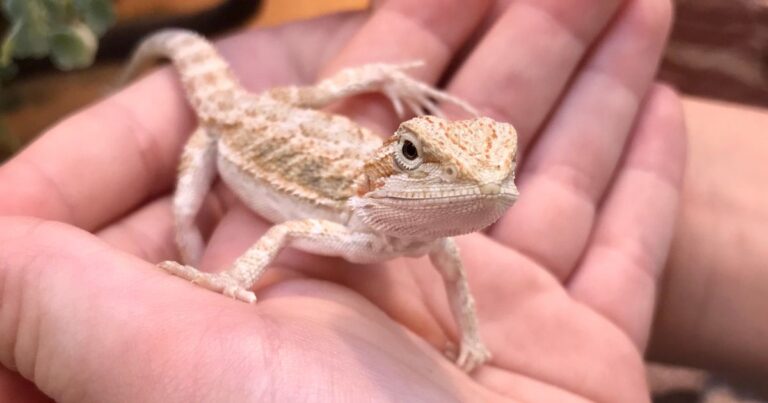Bearded Dragon Shedding Problems and Skin Conditions
Table of Contents
Key Summary Table: Bearded Dragon Shedding
| Age of Bearded Dragon | Frequency of Shedding |
|---|---|
| Juvenile (0-5 months) | Every 3-4 weeks |
| Sub-adult (5-12 months) | Every 1-2 months |
| Adult (1 year and older) | Every 2-4 months |
Bearded dragon shedding can be a flaky business, just ask my buddy Gilbert! From understanding the shedding process to spotting problems and skin conditions, there’s a lot to cover. Stick around for some scaly tales and tips to keep your dragon’s shedding smooth and stress-free!
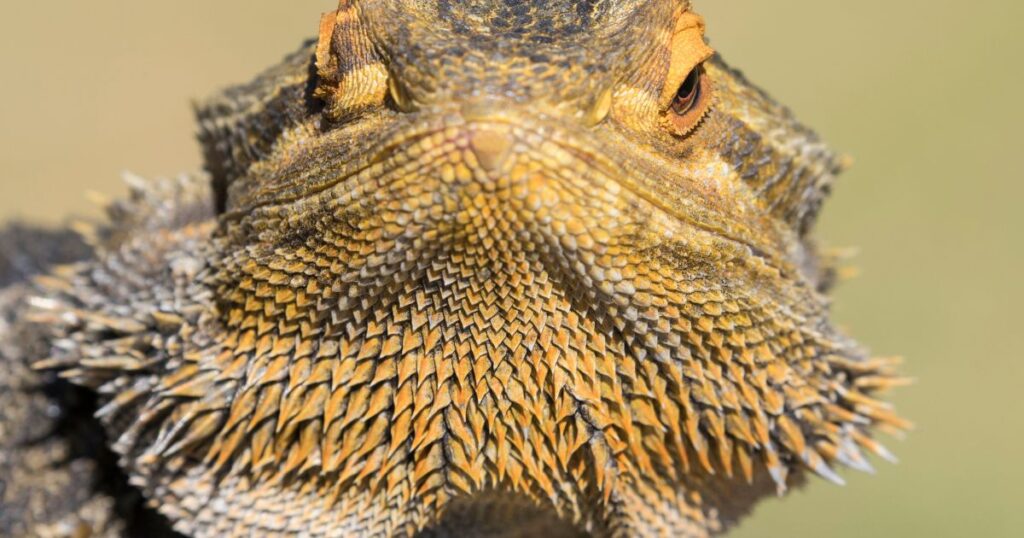
Introduction
Hey there, dragon aficionados! Let me spin you a yarn about a time when Gilbert, my bearded dragon, started shedding his skin. It was like he was trying on a new outfit, only this one came with a bit of a struggle. Shedding, you see, is as natural to bearded dragons as changing clothes is to us humans. It’s their way of growing, of letting go of the old to make way for the new.
Shedding is a natural process for bearded dragons, a sign of growth and good health.
Now, you might be thinking, “Shedding? That sounds like a walk in the park!” Well, not quite. It’s a bit more complex than that. Shedding, or ‘ecdysis’ if you want to get technical, can come with its own set of challenges for our scaly friends. From stuck shed to skin conditions, there’s a whole world of potential complications that can turn this natural process into a bit of a pickle.
But don’t start fretting just yet! With a little knowledge and a lot of love, we can help our bearded buddies navigate through their shedding woes. So, buckle up and get ready for a deep dive into the world of bearded dragon shedding and skin conditions. And remember, no dragons were harmed in the making of this blog post!
Understanding Bearded Dragon Shedding
| Shedding Phase | Description |
|---|---|
| Pre-shedding | Skin appears dull and eyes may look swollen |
| Shedding | Skin begins to peel off in patches |
| Post-shedding | New, vibrant skin is visible and all old skin should be shed |
Picture this: Gilbert, basking under his heat lamp, his skin beginning to look a bit dull and flaky. That’s right, it’s shedding time! Bearded dragons shed their skin throughout their lives, much like snakes. But unlike snakes, who shed their skin in one neat piece, bearded dragons do it in patches. It’s like they’re peeling after a sunburn, only less painful and a lot more necessary.
So, how often does this fashion show happen? Well, it depends. Younger dragons, still in their growth phase, shed more frequently – think once every few weeks. As they grow older, the shedding slows down to a few times a year. It’s all part of the circle of life, dragon style.
But here’s the kicker: shedding isn’t just about outgrowing old skin. It’s also a reflection of a dragon’s health. Stress, illness, poor nutrition – all these factors can affect how a bearded dragon sheds. So, keeping an eye on Gilbert’s shedding habits is like getting a sneak peek into his overall well-being. Talk about skin-deep insights!
Oh, the first time Gilbert shed, it was like he was turning into a little dragon snowstorm! I remember being so worried, thinking something was wrong. But then I did my research, learned about the shedding process, and realized it was all perfectly normal. It was a real eye-opener, like when you realize that your favorite chocolate bar has half your daily calories – shocking, but important to know!
- Signs of shedding: dull skin, loss of appetite, less active
- Shedding process: skin loosens, starts to peel, comes off in patches
- Post-shedding care: gentle bath, monitor for any retained shed
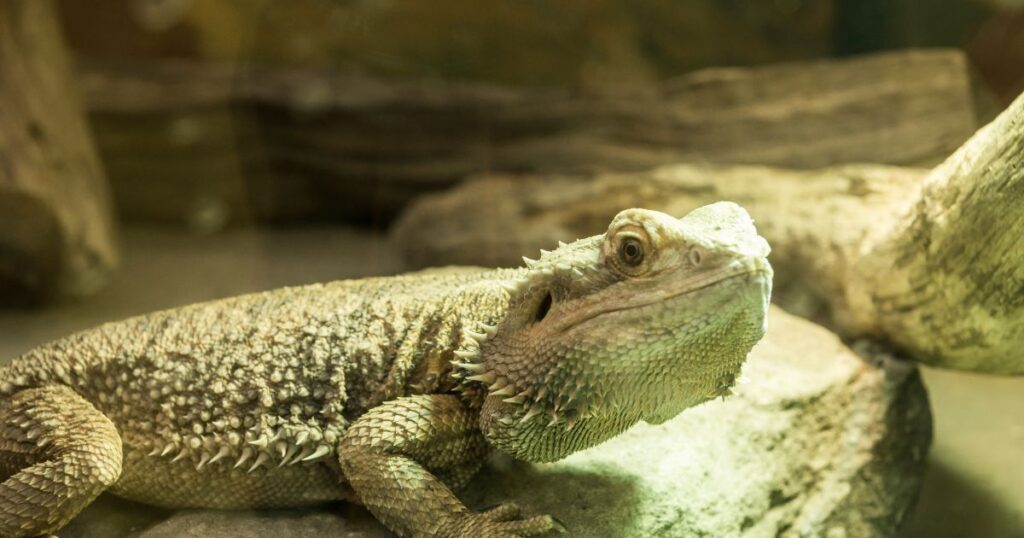
Common Shedding Problems and Their Causes
| Shedding Problem | Causes |
|---|---|
| Dysecdysis (abnormal shedding) | Low humidity, improper diet |
| Retained shed | Low humidity, lack of bathing |
Now, let’s get down to the nitty-gritty: shedding problems. One of the most common issues is dysecdysis, a fancy term for abnormal or difficult shedding. It’s like trying to get out of a tight sweater, but the sweater is your skin. Not a pleasant experience, I can tell you that!
So, what causes dysecdysis? The usual suspects are low humidity and improper diet. Bearded dragons need a certain level of humidity to shed properly, and without it, the skin can get stuck. Similarly, a diet lacking in essential nutrients can lead to poor skin health and shedding difficulties.
I remember this one time when Gilbert had a bit of stuck shed on his tail. It was a dry winter, and despite my best efforts, the humidity levels in his tank had dropped. Poor Gilbert was having a tough time, but with a little help and a lot of patience, we managed to get through it. It was a learning experience for both of us, a reminder that even natural processes sometimes need a helping hand.
Skin Conditions Related to Shedding
| Skin Condition | Symptoms |
|---|---|
| Retained shed | Patches of old skin, possible discomfort |
| Fungal infection | Discolored patches, uneven shedding |
Shedding problems can sometimes lead to skin conditions. Retained shed, for instance, can cause discomfort and even lead to infections if not addressed. Then there are fungal infections, which can cause abnormal shedding and skin discoloration.
These conditions often come with telltale signs. Retained shed, for example, looks like patches of old skin clinging to the new. Fungal infections, on the other hand, can cause discolored patches and an uneven shedding pattern.
Gilbert once had a minor fungal infection. It was a stressful time, but with prompt treatment and a lot of TLC, he was back to his old self in no time. It was a stark reminder of how important it is to keep a close eye on our scaly friends, especially during shedding season.
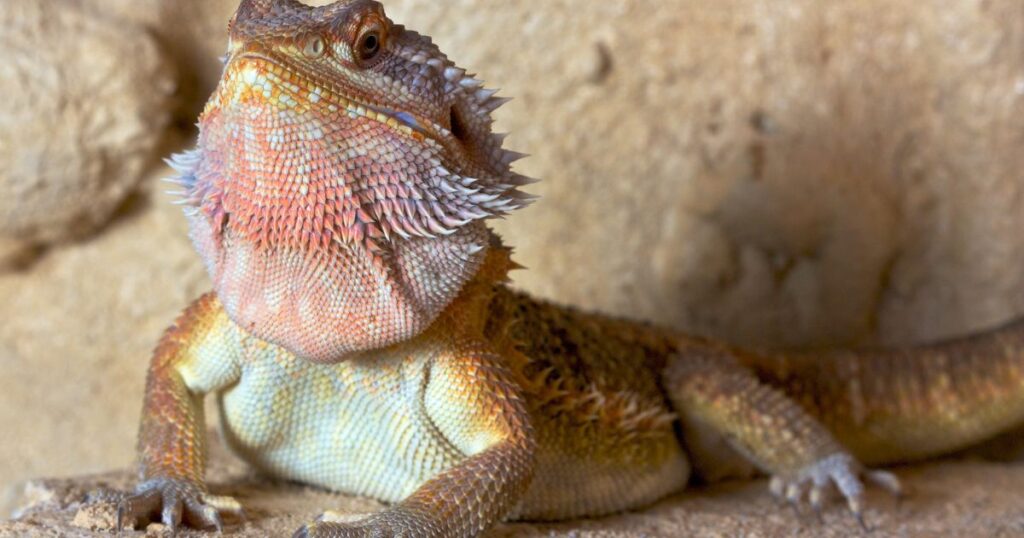
How to Help Your Bearded Dragon Shed Properly
| Shedding Support | Description |
|---|---|
| Proper humidity | Regular misting, shallow water dish for soaking |
| Balanced diet | Diet rich in essential nutrients for healthy skin |
| Regular health checks | Monitor for any signs of discomfort or complications during shedding |
So, how can we help our bearded dragons shed properly? Well, it starts with providing the right environment. Maintaining proper humidity levels in their tank is crucial. This can be done through regular misting and providing a shallow water dish for your dragon to soak in.
Diet also plays a key role. A balanced diet rich in essential nutrients can help ensure healthy skin and a smooth shedding process. And of course, regular health checks and prompt attention to any shedding issues can go a long way in preventing complications.
Over the years, I’ve developed a bit of a shedding routine for Gilbert. It involves regular misting, a special shedding bath, and lots of monitoring. It’s a labor of love, one that has brought us even closer. After all, nothing says bonding like helping your bearded dragon shed his skin!
Every bearded dragon is unique, and their shedding process is a reflection of that uniqueness.
Conclusion
Understanding and supporting your bearded dragon during shedding is an essential part of dragon care. It’s about being there for them, helping them navigate through this complex process, and ensuring they’re healthy and comfortable.
So, keep a close eye on your dragon during shedding periods. Look out for any signs of discomfort or complications, and don’t hesitate to seek help if needed. Remember, a happy dragon is a shedding dragon!
If you want to learn more about bearded dragon care, check out the Bearded Dragon Care category. And don’t forget to check out my index page on Bearded Dragon Health Issues.
Other posts of interest: Bearded dragon respiratory health: A Breath of Fresh Air for Your Scaly Friend and Bearded dragon stress marks
And as for Gilbert and me, we’re off to another shedding season. It’s a time of growth, of change, and of new beginnings. And through it all, we’re there for each other, navigating the joys and challenges of dragon care together. Because at the end of the day, that’s what it’s all about – sharing this wild, wonderful journey with our scaly friends.
Disclaimer: This article is based on personal experience and should not be used as a substitute for professional veterinary advice. If your bearded dragon is experiencing shedding problems or skin conditions, please consult a reptile vet.
There you have it, a comprehensive guide to bearded dragon shedding. Remember, every dragon is unique, and what works for Gilbert might not work for your scaly friend. So, keep exploring, keep learning, and most importantly, keep enjoying the wonderful world of bearded dragons!
Frequently Asked Questions
Why does my bearded dragon look like he’s been rolling in flour?
Ha! No, your bearded dragon hasn’t been baking bread in secret. That’s just him getting ready to shed. The skin becomes dull and flaky before it starts to peel off. So, no need to check for a hidden stash of cookies!
My bearded dragon is shedding in patches, not all at once. Is that normal?
Absolutely! Unlike their snake cousins, bearded dragons don’t shed their skin in one go. They prefer the patchwork style, shedding in bits and pieces. It’s like they’re creating a fashion statement, one patch at a time!
My bearded dragon seems to be having trouble shedding. What can I do to help?
First off, don’t panic! Sometimes, bearded dragons need a little extra help with their shedding. You can start by increasing the humidity in their tank or giving them a gentle bath. If the problem persists, it might be a good idea to consult a vet.
Can shedding problems lead to skin conditions?
Yes, they can. Retained shed, for instance, can cause discomfort and even lead to infections if not addressed. That’s why it’s important to keep a close eye on your dragon during shedding season. Remember, a stitch in time saves nine!
How often do bearded dragons shed?
Well, that depends on their age. Young dragons, still growing, shed more frequently – think once every few weeks. As they grow older, the shedding slows down to a few times a year. It’s like they’re saying, “Been there, done that, got the T-shirt!”
How can I make the shedding process easier for my bearded dragon?
Great question! Maintaining proper humidity levels and providing a balanced diet can go a long way in ensuring a smooth shedding process. And of course, a little TLC never hurts!
My bearded dragon’s skin looks brighter after shedding. Is that normal?
Absolutely! After shedding, your bearded dragon’s new skin will look brighter and more vibrant. It’s like they’ve just come out of a spa, all refreshed and rejuvenated. Talk about a glow-up!
